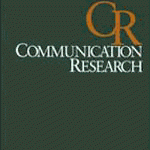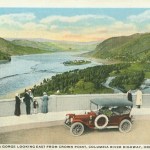Science communication research
Readers in the DC area will definitely want to check out the upcoming event on June 23 at the National Academies. Details are posted below. I hope to be able to attend and to report back on some collected remarks.
It will be interesting to compare the thoughts of the assembled practitioners with the conclusions from the article we published last week at Nature Biotechnology, which synthesized relevant research in the fields of science communication, ethics, and policy and highlighted eight key recommendations.
The National Academies Presents: An Educational Event on Science Communication
The…
I am back from an excellent science journalism conference in Denmark and will have more to say on the meeting which highlighted several issues that speak directly to challenges faced here in the US. But for now, I wanted to return to our Commentary article "Science Communication Re-Considered" published last week at Nature Biotechnology.
Of particular interest to readers, we discuss the rise of science blogging as just one small part of the complex puzzle which is public engagement. There is a lot to like about blogs but there is also a lot to be cautious about. Importantly, despite great…
In this month's issue of Nature Biotechnology, I join with other authors to suggest several bold new initiatives in science communication and journalism. The Commentary article includes an overview of key issues and trends in the field and closes with a series of specific recommendations.
The article is based on a workshop held this past year in Washington, DC, organized by Timothy Caulfield and Tania Bubela of the Health Law Institute at the University of Alberta. The authors reflect the participants in that workshop and include representatives from the U.S., Canada, the U.K., Germany and…
I head to Stockholm and Copenhagen today where on Wednesday I will be participating in a unique conference organized by the Danish Science Journalists Association. The focus is on many of the central themes discussed at this blog including framing, public engagement, the future of science journalism, and the promise and challenges of new media technologies. For more, check out below one of the "Dane in the Street" interviews that organizers have run in advance of the conference.
I won't have much time to blog but I do hope to be able to post my own pictures of these wonderful cities and to…
Next week there will be big news on the science communication front. In anticipation, I was just going back over some things that I have written on the topic over the past decade. I ran across an essay I wrote for Skeptical Inquirer from 2003, which I posted below the fold. The essay puts into context an interesting debate that took place in the pages of The Guardian between eminent UK scientist Susan Greenfield and science communication professor Jon Turney.
Greenfield's side of the debate reflects a continued dominant line of thinking referred to as the "deficit model," the assumption that…
The future of science journalism and communication will involve three key strategies:
1. "Going broad" and reaching a diversity of audiences across non-traditional media platforms such as entertainment film and television, new genres of documentary film, new forms of multi-media storytelling, new genres involving satire and comedy, and through collaborations with the creative arts.
2. "Going deep" and creating new non-profit forms of digital science journalism, especially at the local or regional level, that offer rich reservoirs of information via content contributed by professional…
I spent the past three days with my colleague Ed Maibach and several graduate students conducting one-on-one interviews about climate change with participants recruited and screened from among the diversity of visitors to the National Mall in Washington, DC.
In conducting these qualitative interviews--which varied in time between 30 minutes to more than an hour--I was amazed at the forms of localized knowledge and depth of reasoning that participants from different educational backgrounds and with varying political views brought to the topic of climate change.
The experience reflected…
My friend Dietram Scheufele sat down a few weeks back for a Q&A interview with one of the magazines produced by the the University of Wisconsin-Madison. Scheufele, a professor of Life Sciences Communication at UW, was asked about new directions in science communication.
In the interview, he emphasizes several themes from social science research in the area that we first popularized in a cover article at The Scientist magazine back in 2007 and that we expand on in a lengthy article that is likely to be out later this year. Below are a few key comments from the interviews. I will be…
As I wrote last week, there was a lot to like about the "going broad" communication strategy of the Darwinius masillae fossil discovery published at PLoS One.
Yet, as I also noted the major caveat was that this strategy of reaching a broader and more diverse audience for science might be better applied to a scientific subject or body of research. When applied to a single study, there was a far greater likelihood of engaging in unmerited hype with the risk of diminishing public trust or at least numbing the audience to claims of "startling new discoveries."
So it is important to distinguish…
Night at Smithsonian topped the Box Office this Memorial Day weekend with a smash opening of more than $70M outpacing Terminator Salvation which scored a $43M debut.
Museum directors and science educators are sure to be looking to ride the movie's success with efforts to broaden their reach in terms of attendance and community engagement. Yet the adventure and the joy of a museum experience, captured so well in Ben Stiller's "Night at..." fantasy series, leaves open the question of what we exactly learn about science when visiting a museum and just as importantly, how we learn.
That was…
Hooked around the accidental release of a climate change "rebranding" memo by the firm EcoAmerica a few weeks back, Seed magazine runs today an interesting roundtable discussion on the good, the bad, and the ugly of applying framing research to communicating about climate change.
I provide comments as one of six experts "who discuss the merits of framing climate change, the language that troubles them, and the inherent bias of any chosen word." Others include climate scientists Michael Mann and Gavin Schmidt, ecologist Ann Kinzig, political scientist Clark Miller and science writer Robert…
I did an interview this morning with Elie Dolgin of The Scientist magazine discussing the "going broad" media strategy surrounding Darwinius masillae aka Ida the fossil. The magazine has the Q&A interview up on their site. The user registration is free and well worth the 2 seconds in order to access the wealth of content at the magazine's Web site.
Below are my comments. As I've noted, this week's events will serve as a long standing case study for science communication scholars and professionals to analyze and debate.
The Scientist: How unusual is this amount of media attention for a…
For readers in the Madison area, I will be giving a lecture on Thursday, June 25 at the University of Wisconsin as part of the university's summer lecture series. The lecture is free to the public and takes place in 1100 Grainger Hall from 7-9pm.
The series focus this year is on the intersection of science, public communication, and politics, with a number of top scholars in the field slated to speak across the summer. Below is a description of my talk, representing many of the themes discussed at this blog, in forthcoming articles and book chapters, or in current projects.
What's Next for…
Fronting the NY Times today is a preview of a bold new strategy for engaging hard to reach audiences on science. As the NY Times describes, today's media event that unveils the fossilized remains of the monkey like creature Darwinius masillae features a unique collaboration between the History Channel, the open-access journal PLoS One, and the American Museum of Natural History.
Along with today's publication at PLoS and the media unveiling at AMNH, there will be a two hour documentary on Monday at the History Channel, an exclusive arrangement with ABC News to appear on Good Morning America…
Several colleagues at the University of Wisconsin-Madison have a new study out that shows not surprisingly that like-minded conversations drive attitude extremity relative to science policy.
Analyzing data from a national panel survey conducted between 2002 and 2005, graduate student Andrew Binder and his collaborators find that after controlling for demographics and news use, like-minded discussion pushed respondents' position on stem cell research to the extreme ends of the distribution, either towards strong support or strong opposition.
The study comes out of the research group at…
The Global Language Institute has started a new index that ranks universities by number of media mentions. Below is their top ten universities.
I have a few reservations and cautions about the significance of these rankings. At one level, having comparative benchmarks that provide at least some data about the media profile of the research conducted at universities is better than no data at all. However, there is the risk that these ranking reinforce the marketing and publicity trend among research universities, with science joining athletics as a part of the competitive branding of the…
Next week on Thursday at noon I will be in Edmonton, Canada delivering the annual Picard Lecture at the University of Alberta's Health Law Institute. More information on the presentation "Science Communication at a Crossroads: Promising Directions, Lingering Distractions" can be found here. The lecture follows similar themes that I addressed in a presentation late last year at the New York Academy of Sciences.
At The Three Cultures Summit on Climate Change, What Scientists Want to Learn From Social Scientists
I'm spending the weekend in Oregon at an outpost on the edge of the Columbia River Valley. I'm in town for a unique three cultures summit on climate change, a workshop that brings together scientists, social scientists, philosophers, poets, and artists to discuss strategies and methods for public engagement and communication.
This afternoon we broke into separate disciplinary groups and embarked on a short hike to reflect on what we would like to learn from the other disciplines. When we returned, I jotted down the following notes on what scientists said they would most like to learn or…
A new study at the journal Risk Analysis examines the factors shaping public perceptions of nuclear energy and provides important clues about how to effectively mobilize public support for expanded investment in the technology. (See end of post.)
The study analyzes data from 1997, but the relative stability in public attitudes about nuclear energy and the strong measurement in the study of core constructs such as risk perceptions, environmental values, and nuclear attitudes make the findings still relevant.
Not surprisingly, according to the analysis, basic value orientations--including…
Day two of the expert workshop on science communication at the Venice Institute of Science & Arts focused more narrowly on the question of defining and evaluating forms of science communication including journalism, institutional outreach, advertising and marketing, entertainment programming, digital media, policy campaigns, and public engagement initiatives such as consensus conferences or deliberative forums. (The workshop was organized by Massimiano Bucchi, professor of sociology of science at University of Trento, Italy, where he chairs the Science & Society Programme)
Many…






